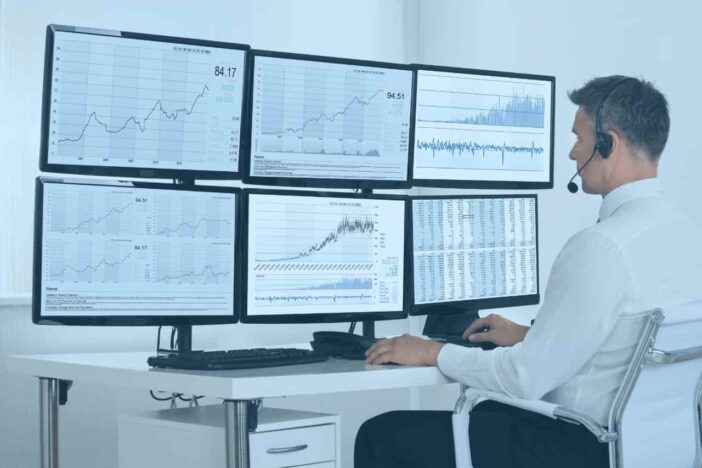It’s the stereotypical image of a trader: sat at a desk, phones ringing, and a baffling array of screens showing charts and graphs filling the space in front of them. However, while this might be the stuff of movies and television shows, it’s also the case that many traders do, in fact, have a series of screens out in front of them in order to make sure that they don’t miss a beat when it comes to their trading experience – and their portfolios.
With that in mind, this article will explore why multiple screens can be a lifesaver for traders. It will also take a look at some other items of kit that many traders are likely to find useful as ways of enhancing their chances of making a good investment choice.
Timeframe comparison
First off, traders need to make sure that they have access to a variety of timeframe options in order to make effective analytical decisions about their open positions. If a trader does not have this, for example, they may find themselves unable to compare a long-term view of performance (say, two years) and a short-term one (say, one day).
This may be more or less relevant depending on the asset class they hold and how volatile it is – and also what macroeconomic or global factors affect its performance, such as interest rate announcements or general elections. However, it’s certainly the case that good knowledge of performances over time is essential for effective trading. Without these bits of knowledge, the whole trade can come falling down: it’s like trying to drive without knowing what all the parts of the car do!
It’s certainly possible to hold multiple timeframe charts on the same monitor – and this is an argument that those who are potentially resisting the prospect of buying several screens might take. However, the question of whether or not it’s efficient is another matter. Many people find that flicking between tabs can cause them to waste time, and it also means that you can’t see each timeframe alongside each other – meaning that effective comparison is hard to achieve.
Related: Why do Businesses Use Mainframe Computers? Definitions, Features, and Examples
Cross-asset portfolios
Another reason why screens are so useful is that they allow traders to build cross-asset portfolios more effectively. Some traders specialize in one asset or another: for example, you might become a foreign exchange trader and specialize in Japanese yen/US dollar pair. While you may need multiple screens in order to monitor different timeframes, you won’t necessarily need to monitor multiple different markets at any one time.
If you choose to trade multiple different portfolios, however, it’s essential to have many different screens simply so that you can track each market effectively. You might, for example, want to monitor your forex investments while also monitoring your stocks and shares. Having all of that on different tabs within the same screen can quickly become confusing, and it could cause you to lose your focus. It could also mean that you use information from the wrong market on a trade in another market – which could have disastrous consequences in terms of the value of your portfolio.
What else is useful?
As respected site AskTraders might point out, the best desktop setup for trading isn’t enough – and having multiple screens is not the only way to enhance your chances of success in the trading field. There are plenty of other pieces of top tech that can help you out, such as a smartphone that is enabled with whatever you need to download your broker’s trading package. If your trader offers MetaTrader 5 for mobile, for example, then it’s essential that you have a phone with an operating system and sufficient memory capacity to use it. If you don’t have such a phone, then you’re likely to find that you’re wasting the big opportunities that a system such as MetaTrader 5 can bring – and this could, in the long term, hurt your chances.
In sum, having multiple screens on hand can really change a trader’s life. It’s one way for them to ensure that they can cross-compare how their assets have been performing during time periods to get both long-term and short-term views, for example, while it’s also a way to trade multiple different assets at once. In short, if you’re a trader, then you should make sure that you don’t miss out – and instead properly invest in your equipment today.





